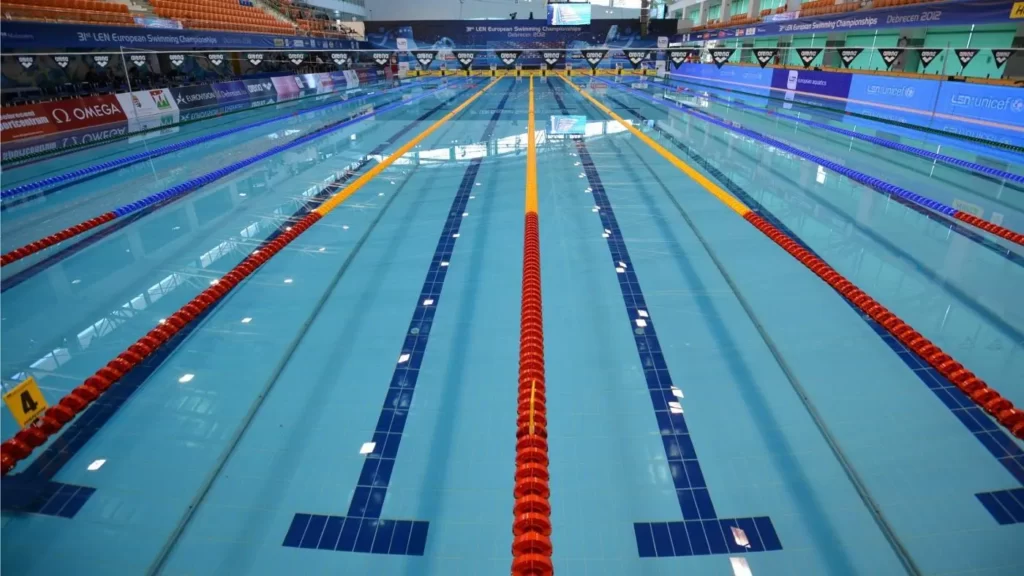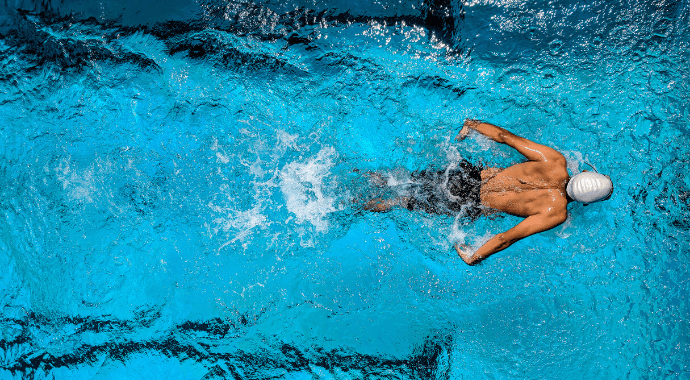How Many Laps Is A Mile In Swimming?
With the mile swim becoming the goal of many swimmers around the world, this has resulted in many being ignorant of the number of laps in the mile swim. In today’s article, we’ll cover everything you need to know about laps to swim in a mile, as well as some additional information about mile swimming that may come in handy in your future swims.
What Is A Mile In Swimming?
Perhaps the most confusing aspect of the mile swim is its distance. As mentioned earlier, a “swimming mile” is actually a different distance from a standard mile (often defined as 1760 yards or 1610 meters).
In swimming, there are 3 main mile distances that are commonly used by different categories of swimmers, let’s take a quick look at them.
Gathering Mile: Most swimmers are probably familiar with the Gathering Mile, as this is the distance commonly used in all international swimming competitions held in swimming pools.
In the yard race pool, the mile is defined as 1650 yards, which is actually 90 yards shorter than the actual mile, while the swimming mile in the meter race pool is defined as 1500 meters, which is approximately equal to 1640 yards, again less than the actual mile.
Pool Training Miles: For training purposes, swimmers use 1650 meters or 1650 yards for training in a mile event, both of which will provide follow-up fitness for the actual race mile, defined as 1500 meters or 16 as we just discussed Fifty yards.
Open Water Miles: When swimming in open water, use the mathematically correct mileage. Meaning 1760 yards or 1610 meters. If your goal is to train for a mile for an open water event, then you should divide 1760 yards by the length of your pool (if it’s in yards), or if your pool is in meters, you should use 1610 Meters divided by its length.
Still, you might be wondering how far you can swim a mile. The answer is – it depends.
It depends on what your goals are – do you want to swim a mile? If so, train to complete 1760 yards or 1610 meters. On the other hand, if your goal is to swim a mile in a swimming competition, then train to complete 1650 yards or 1500 meters.
What Is A Lap In Swimming?
The length of a lap or a pool is the total distance you swim from one end to the other, back and forth, without stopping.
So when someone says “swim a lap”, it’s usually understood to mean 2 times the length of the pool. No matter how long the swimming pool is, the length of the swimming ring is always 2 times the length of the swimming pool.
Also, if someone says “swim a distance,” they mean swim from one side of the pool to the other.
Pool Size Effects The Number Of Laps In A Mile Swimming

Now that you know the distance you’re training for, and there’s really no difference between a lap and a distance, you need to understand how pool size affects the number of laps you swim.
For your convenience, here are the 3 main pool lengths used by swimmers around the world for training and competition –
25-yard pool: This is the length of the pool that American swimmers typically use during the short-course season, which occurs mostly throughout the winter. 25-yard pools are commonly used for high school and college swimming competitions, and many recreational pools in the United States are also 25 yards long.
25-meter pool: Although only slightly longer than 25 yards, this is the pool length used in short-range swimming competitions in most countries outside the United States. The 25-meter pool length is also used in international short-course swimming competitions around the world, such as the World Short-course Swimming Championships held every two years.
50-meter pool: This is the most common pool length in international swimming competitions, including the Olympics. Almost all other swimming competitions, including age group competitions, take place in the 50-meter pool, where many swimmers train throughout the year.
Unconventional pool sizes: Many swimmers can train in pools of varying lengths. For example, this can include a 20-yard, 30-yard, or 40-yard pool. These pools are suitable for training purposes but not for prescribed swimming competitions.
The effect of pool length on laps: Naturally, the longer the pool, the fewer laps it takes to complete a mile swim, while the shorter the pool, the more laps it takes to complete a mile swim.
How To Count Your Laps While Swimming A Mile
It’s good to know how many laps you should swim to complete a mile swim, but it doesn’t help much if you miscalculate your laps along the way, because you’ll end up cheating yourself and your swim goals.
Here are two useful ways to make sure you complete the full swim and get all the rewards –
GPS Swim Watch: Using a GPS swim watch is probably the easiest and most accurate way to measure how many laps you’ve run. What’s great about this watch is that it can measure open water and swimming pools, and it’s very affordable compared to similarly capable watches.
Wearable Knee Counter: Another effective and inexpensive way to count knees, but requiring more brain power is a simple device that can be worn on your finger called a wearable knee counter.
It’s a low-profile, low-tech device that you press a button after every lap. It also has a built-in timer so you can see how fast your lap is.
How Long Does It Take To Swim A Mile?
The average speed for the 100-meter freestyle is about 2 minutes. Assuming you’re going to be swimming non-stop, let’s switch to yards, about 110 seconds per 100 yards. This means that if you swim the freestyle, it will take about 1936 seconds to cover a distance of 1760 yards (or a mile). 1936 seconds is about 32.3 minutes.
Other strokes, such as the backstroke, butterfly, and breaststroke, take about 32.3 minutes.
How Many Calories Do You Burn Swimming A Mile?
Everyone knows that swimming is a great all-around workout and a great way to burn extra calories. That’s why you might wonder how many calories you can burn while swimming a mile.
Obviously, there are many factors that affect how many calories you burn when you swim a mile, such as your age, weight, how fast you swim, and how you swim, so it’s not entirely realistic to provide a 100% accurate answer.
Most people burn about 250-350 calories, 230-300 calories, 350-400 calories, and 450-500 calories while swimming a mile of freestyle, backstroke, breaststroke, and butterfly, respectively.
Final Thoughts
Swimming a mile nonstop isn’t a daunting challenge, but it’s something every swimmer strives to achieve. If you can’t swim a mile right now, don’t get discouraged, you just need to improve yourself with some small goals first.
